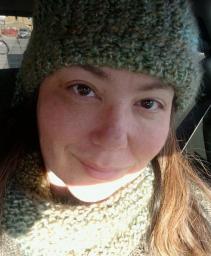Hey guys! it's been a while! i've been posting a lot on my blog, but not much on here!
anyway, my brother and i made english muffins, which happened to be one of the most fun breads i've made so far. i hope you guys enjoy my post on them!
you can read all the posts on our blog, http://bakingacrosscountry.wordpress.com/ i've been interning at a bread bakery as well as a bagel shop! this project has definitely been the highlight of my high school career.
__________________________________________________________________________________________________________________________________________________________

My brother, Evan, came home from his trip to Antarctica and New Zealand a few days ago. We had a lot of family events that filled the entirety of the weekend, and we had no time to really even see each other. Even though I had school today, I took the morning off to bake bread and hang out with my brother before he flew back to California. English muffins were the next on deck-and I couldn't have asked for a more interesting bread to make with Evan.
English muffins, despite their name, are not like the typical muffins we are familiar with. Yeast-risen, English muffins are cooked atop a griddle, giving it its classic, flattened shape. Once browned on the outside, the muffins are baked fully in the oven. English muffins are usually eaten for breakfast, or for sandwiches. However, to retain the texture of the crumb, English muffins are split open with a fork, revealing the trademarked "nooks and crannies" inside.
English muffins are very similar to crumpets, which are yeasted breads baked in a mould on a griddle. However, crumpets have their defining holes on the top of the bread, while English muffins have holes on the inside.
Cooking yeasted breads on a griddle was nothing new- it has been documented that in 10th century Wales breads were made like this. In the 19th century England, yeasted griddle-breads were sold door to door by a muffin man. He would come around every day, and deliver fresh breads.
English muffins were popularized by Samuel Bath Thomas, who marketed them in New York City in the late 1800s. English muffins gained their identifying trademark "nooks and crannies" in the mid-1920s.
The English muffins that I've unfortunately been exposed to are rubbery, store bought Thomas' ones. The only positives about these are that when their split with a fork, toasted, and buttered, they do not taste half bad. However, I'm sure English muffins have the potential to be a delicious breakfast and sandwich bread.
English muffins are enriched bread, with butter and milk. They are a direct bread, meaning they do not have a preferment or retardation. However, I believe that these would be great using a sourdough starter, adding a more complex flavor. Evan and I decided that we would make two batches because it only makes six at a time. If we doubled it, we would have enough to feed our bread-hungry brother, Will, and freeze some for future breakfasts.
Evan and I began mixing the dry ingredients- flour, sugar, salt and yeast- together. Since we didn't have any buttermilk, we clabbered milk with vinegar to make a buttermilk substitute. We added the "buttermilk" and butter to the dough, and kneaded it until it made a soft, tender dough.
We let the dough proof until doubled, for about two hours. The dough was so soft and supple; It was surprised that it would be used for English muffins. We scaled it into 3 ounce portions, and shaped them into balls. We sprinkled them with a really coarse cornmeal, and a finer one. Then, we let them proof for about 2 hours until they puffed up significantly.
We originally were going to use a cast-iron skillet, but the one we own is only about 8 inches in diameter. We settled on our electric-griddle which we use for pancakes. They cooked on the first side for about 5 minutes, or until they were very dark brown, but not burnt. Then, we flipped them, and baked them on the last side.
Once cooked on both sides on the griddle, we baked them in the oven for about 5 minutes, or until they were fully cooked.
They were on the big side, and a little thicker than the ones were used to. Evan and I split one open (with a fork!) and tried it. They tasted real, and delicious. Unlike store bought ones, they didn't taste chemically or rubbery, but were soft with a crunchy corn crust.
Next time (and I promise there will be a next time), I think I'll scale them into about 2.5 ounce balls rather than 3 ounce ones. It might have been Evan's presence in the kitchen, but English muffins were probably the most fun and most interesting bread I've baked so far.














 Rose Levy Beranbaum's English Muffins: Rose Levy No. 1
Rose Levy Beranbaum's English Muffins: Rose Levy No. 1

